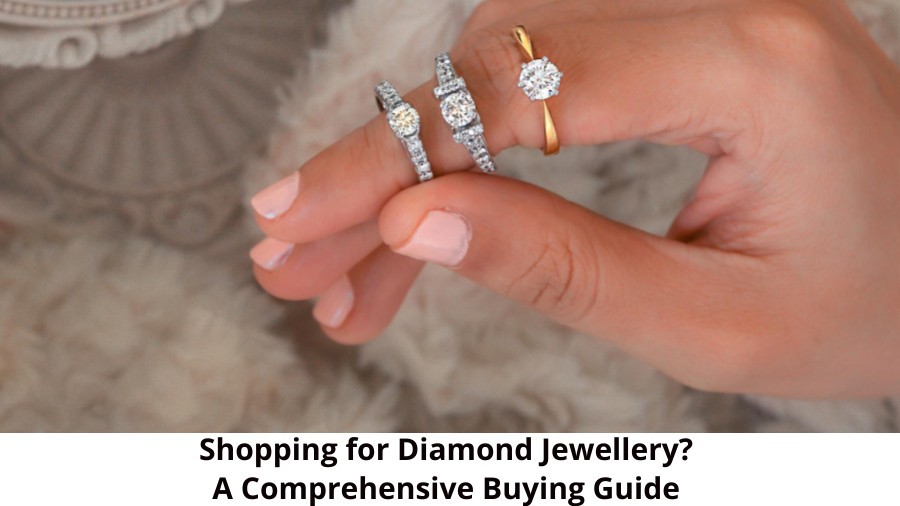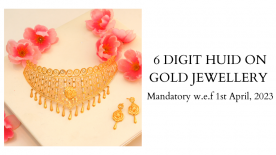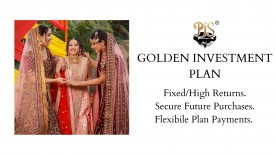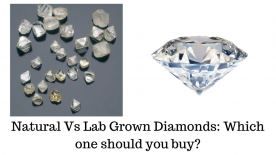Authors:
Aditya Chawla - Trained Gemologist from The International Gemological Institute,
Raj Lakshmi Singh - Professional Jewellery Blogger.
How frequently do you hear "diamonds" and "the 4 Cs" mentioned together? We believe this happens quite regularly. The majority of us enjoy the sparkle of diamonds and get mesmerised by scintillating diamonds. We choose the jewellery based on how it looks and leave the rest up to the jewellers. Our forefathers were familiar with jewellers in their era and had complete faith in them. There was no need to confirm their sincerity or the diamond's purity. Now, times are different. Fortunately, as more people, especially Millenials, buy diamonds, they have access to an abundance of information and enjoy doing their research.
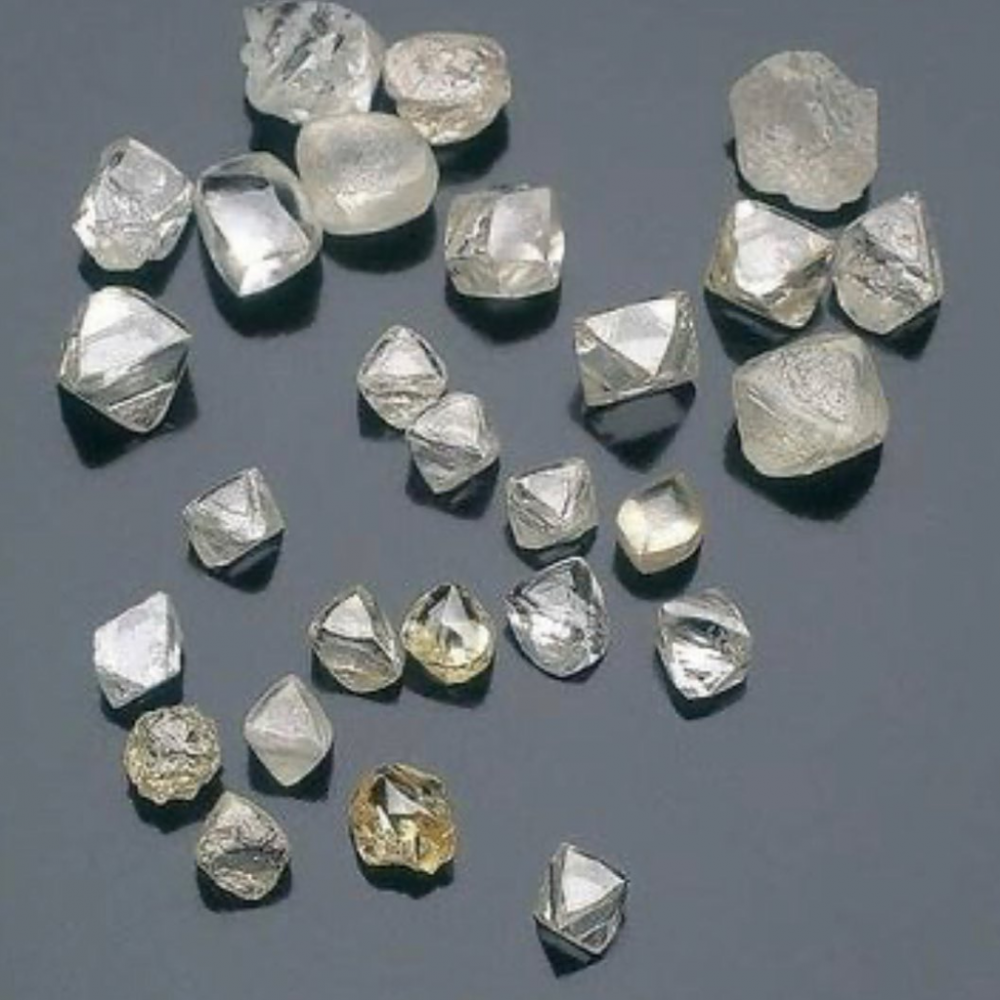
This buying guide on choosing a solitaire diamond is one way we help our customers by giving them information in a convenient place. Before continuing, it's essential to clarify what we mean by "solitaires" in the first place.
(Prefer to watch a video? Here's a quick video summary from Aditya Chawla - Trained Gemologist from The International Gemological Institute)
What exactly is a Solitaire?
The Latin term Solitarius, which means "alone" is where the English word "solitaire" comes from. The focal point is usually a single sparkling diamond. A solitaire diamond is most frequently studded in engagement rings. A single diamond is put in the centre of the basic band of the ring. The most common cut of all, the brilliant round cut, has 58 facets (including the culet), or tiny faces, which reflect light and give the stone its brilliance. With accent stones or a diamond halo surrounding the centre stone, solitaires can also be set in ornate settings. The solitaire may appear bigger and more sparkling in this kind of setting. A solitaire diamond can be anywhere between a quarter carat and several carats in weight.
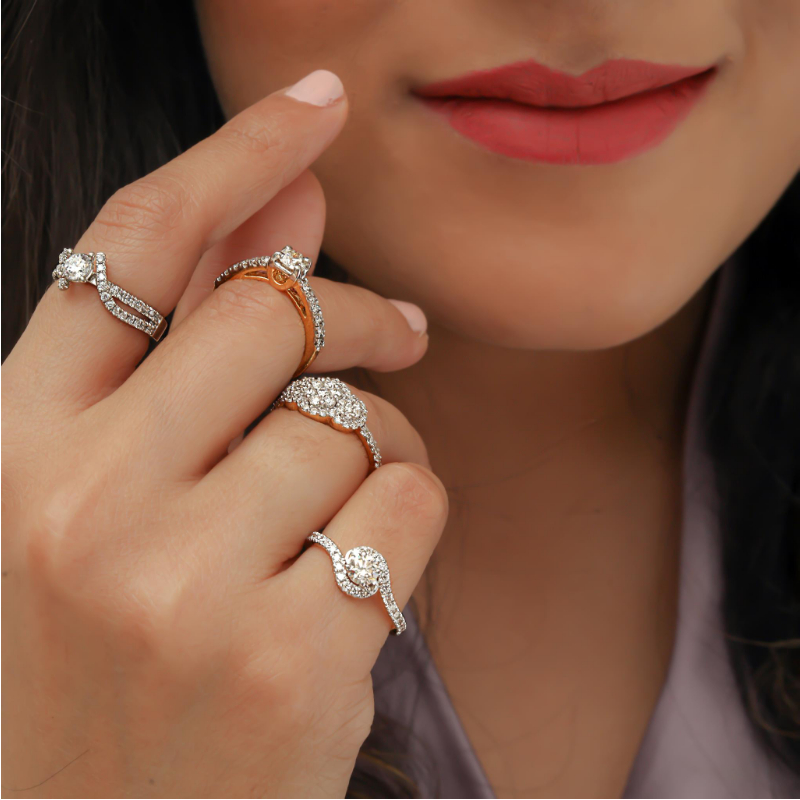
A single diamond that is set in jewellery, typically a ring, is known as a solitaire diamond. The solitaire diamond is the most common style of diamond wedding band or engagement ring that looks evergreen and stays forever. Thankfully, solitaires are not just found in rings. The demand for other diamond jewellery is just as high. Examples include diamond earrings, solitaire pendants, running diamond solitaire bracelets. Another interesting aspect is that Solitaires are genderless. Men can also be seen wearing solitaire stud earrings and best used in engagement rings for men.
The price of the ring is often determined by the size (carat) of the diamond. The price of a diamond is also influenced by its cut, clarity, and colour. It's important to engage with a skilled jeweller when looking for a solitaire diamond so they can guide you in choosing a well-cut stone with good clarity, colour and cut. Choosing a setting that will protect the diamond is equally important. This information about solitaires can be useful. However, it is better to know how to choose a solitaire.
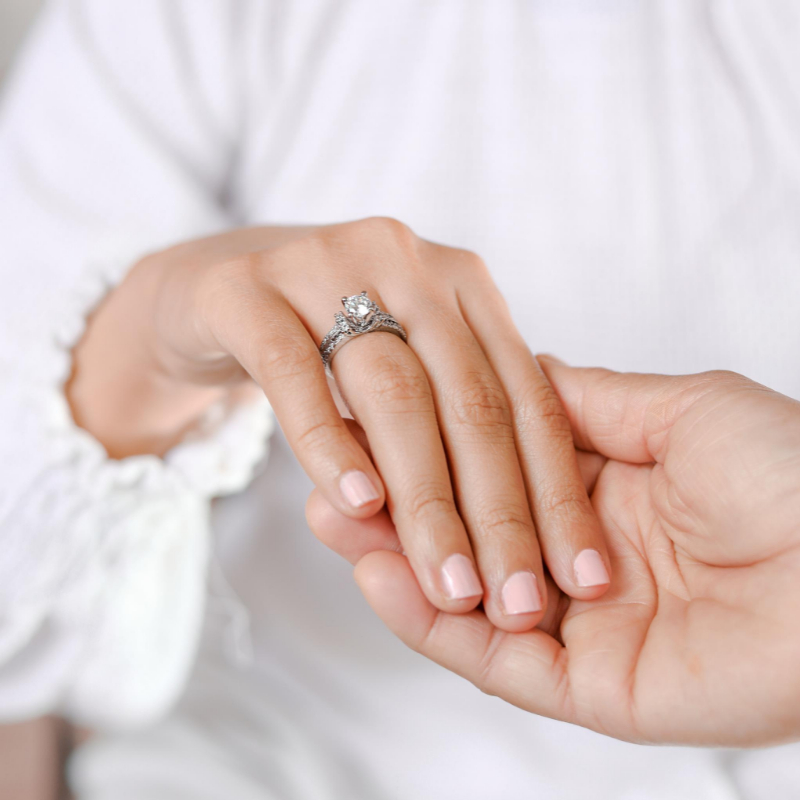
What are the 4Cs to Look For in A Solitaire Diamond When Buying?
The 4 Cs - The first thing to keep in mind when looking for a diamond solitaire is the "4 Cs": carat weight, cut, colour, and clarity.
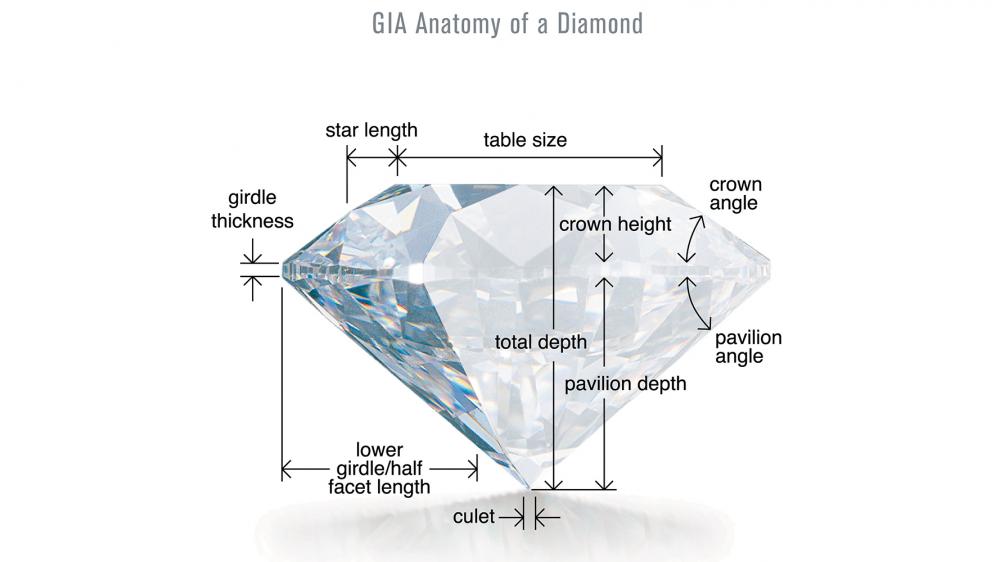
Carat Weight- The weight of your solitaire, expressed in metric carats, is referred to as the carat. Notably, the diamond's carat has little bearing on how beautiful it is, but it can significantly affect how much it costs. Two stones with the same carat weight might have very different values. This is because of how differently they are cut, coloured, and clear. Consider your stone's carat weight after the other 3 Cs, then.1 carat is equal to 100 cents and solitaire diamonds come from a quarter of carat to several carats.

The bigger the carat weight of a diamond, the higher the price of it. The price does not increase in the same ratio, like a 1.00 ct Solitaire Diamond price is not going to be just the double of a 0.50 ct Solitaire. Likewise the price of a 2.00 ct Solitaire Diamond is going to be much higher and not just double of 1.00 ct Solitaire Diamond.
Cut- A solitaire's value can be significantly impacted by the way it is cut. The cut can be regarded as the most important of the four variables. It provides information about the diamond's brightness and ability to reflect light. A stone can be cut in a variety of ways, including round, oval, emerald, marquise, cushion, trillion, and princess cuts, to name a few. The diamond appears more brilliant the better the cut. So make sure your solitaire is well-cut and has a dazzling shine.
Always ask for a Solitaire Diamond Certificate from a reputed lab like Gemological Institute of America (GIA) or International Gemological Institute (IGI) and in the certificate - For a Round Brilliant Cut Diamond, always look for Ex Ex Ex cut and should buy that.
The round brilliant cut, for example, gives the stone greater shine and brilliance than other cuts. Similar to how some other cuts, like the marquise and oval, exaggerate the size of a stone. You must take into account each of these elements while selecting your solitaire jewellery.
Colour - In nature, diamonds come in a variety of colours. They range in colour from being colourless to bright yellow or even brown. The most valuable and scarce diamonds are colourless ones. Naturally, they are also the priciest ones available on the market. This implies that the more colourless your solitaire is, the more valuable it will be. The colour ranges from D (colourless) to Z.
Which quality of solitaire is best?
More colourless the solitaire, the rarer and greater its value. If you are looking to buy a high-quality solitaire, go for solitaires that are colourless or nearly colourless.
In the below chart, D range is the highest value solitaire. The value starts decreasing subsequently with the H range & beyond.

Clarity - Natural flaws are known to exist in the majority of diamonds. Internal flaws are referred to as inclusions, and outward flaws are referred to as blemishes. These flaws have an impact on a diamond's clarity. In certain cases, flaws are invisible to the naked sight. Try to choose a solitaire with a high clarity rating while making your choice.
The clarity in a Diamond ranges from FL (Flawless). IF (Internally Flawless), VVS (Very Very Slight Inclusion) 1 and 2, VS (Very Slight Inclusion) 1 and 2, SI (Slight Inclusion) 1 and 2 and I1, I2 and I3. The better the clarity, the higher the price.
Additional Important Pointers When Buying A Solitaire Diamond
Fluorescence -Fluorescence refers to a diamond's tendency to emit a soft coloured glow when subjected to ultraviolet light (such as a "black light"). The visible effects of Faint to Medium fluorescence are perceptible only to a gemologist using a special UV light source.
The fluorescence grade as determined by theGIA, using the following scale:
Very Strong, Strong, Medium, Faint, None
Generally, the solitaire diamonds having a very strong to mediumfluorescence are available at a higher discount as Fluorescence is considered to be a defect and you wouldn’t want that.
It is always recommended to buy a Solitaire Diamond with No Fluorescence.
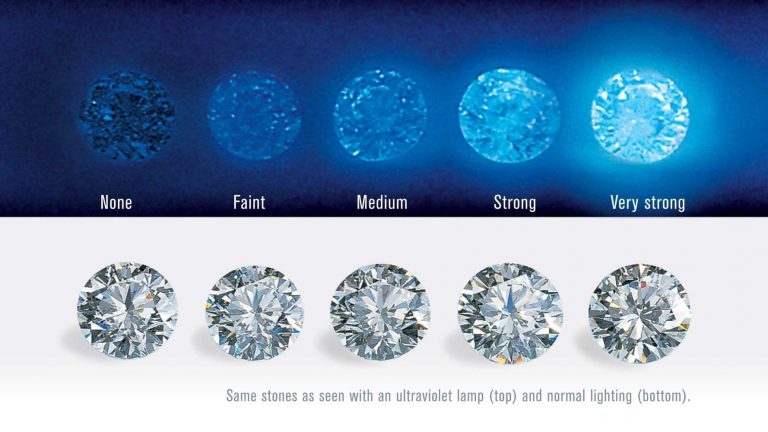
BGM Diamond - BGM stands for Brown, Green, and Milky. It means that sometimes a diamond can have a brown-green undertone or a milky opaqueness. BGM is something that is not indicated on the certificate and no one generally wants a BGM Diamond. It is SO important to see the diamond in person in order to make sure that you don’t have BGM or work with a trusted jeweller. A diamond with these undertones can have great quality in terms of the 4 C’s but if you see it in person, you could notice a milkiness that dulls the sparkle, or dark hues which you wouldn’t want and also lowers the value of a diamond.
In order to ensure that your diamond does not have BGM, you must work with a trusted source. Here at Punjab Jewellers and Sons, we pre-scan all our diamonds with gemologists so we only show you diamonds with no BGM. We’ll only curate diamonds we want to wear ourselves.
It certainly sounds easy, doesn't it? It is possible, but it is wise to be aware of the pitfalls while picking a solitaire.
What Are Some of the Most Popular Solitaire Shapes?
Round Solitaire - A diamond with a round brilliant cut. with 58 facets (including the culet), the most popular diamond shape is round. Single diamond rings typically use this style.
Princess Solitaire: Square princess cut diamond in a princess solitaire. The square Princess cut, which is the second-most popular, has more than 70 facets.
Emerald-Cut Solitaire - Step-cut diamond with a rectangular shape. a more understated diamond cut, one that prioritises fire over brilliance.
Oval Solitaire: An enlarged version of the round brilliant. Despite being less common than the round, excellent for size.
Marquise Solitaire: It has pointed extremities and a boat-like design. The marquise diamond is a lovely, elegantly elongated diamond.
Heart Solitaire: The most romantic solitaire is the heart-shaped brilliant cut. Customers either admire or dislike the heart shape, which makes it popular for Valentine's Day.
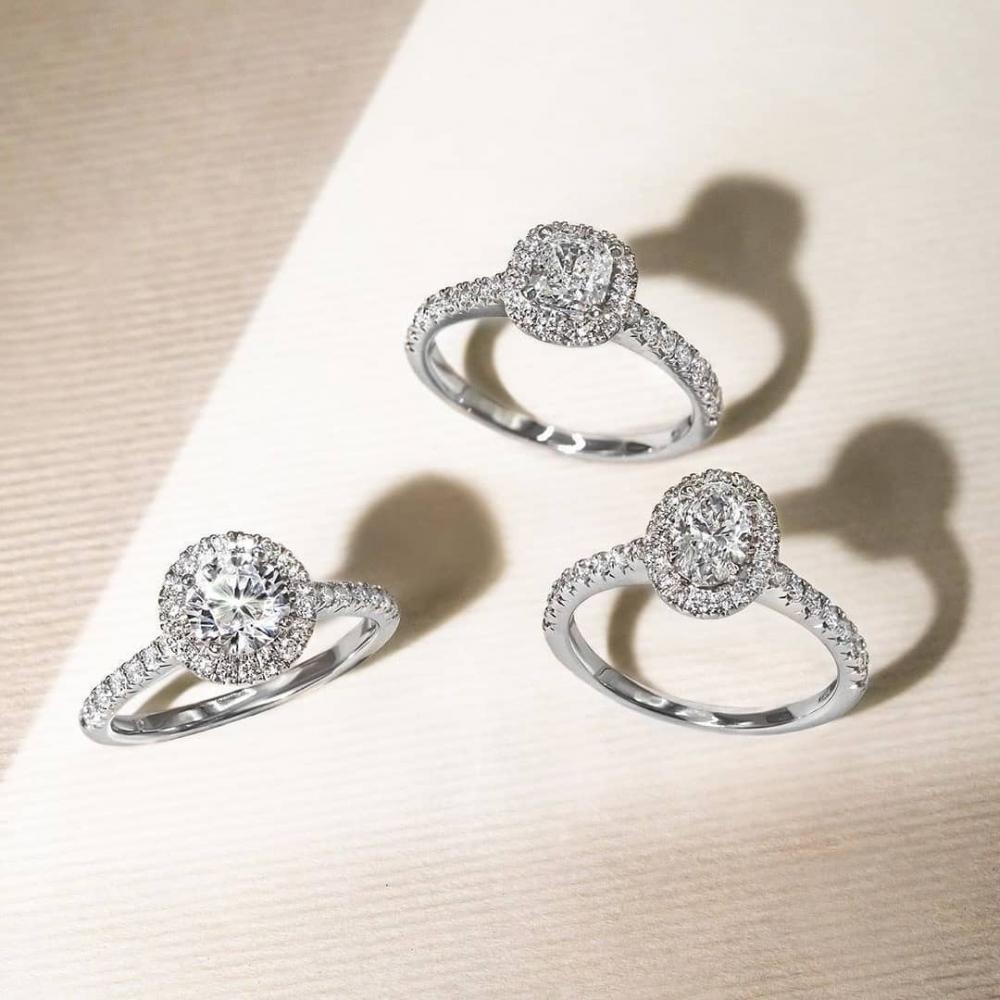
How To Choose the Best Solitaire Diamond: What Not to Do?
Not choosing certification: When purchasing diamonds, do not neglect the significance of certification. A certificate provided by a recognised organisation grades a diamond using the 4Cs. Consequently, you may precisely determine the stone's cut, colour, clarity, and carat weight. Additionally, you learn whether the diamond is natural or synthetic. You can be certain of the diamond's authenticity and quality if you obtain a certificate from a reputable organisation. As a result, there is less chance that you will pay more for a subpar stone. Insist on buying a certified diamond at all times.
A renowned institution like Gemological Institute of America (GIA), International Gemological Institute (IGI) or SGL Labs gives the buyer confidence and value for their purchase. Always ask for a Solitaire Diamond Certificate when buying.

Failing to do proper research:Don't haste when purchasing your solitaire. Spend some time contemplating your needs. Additionally, select how much you are willing to pay for the stone. Learn the meaning of the 4Cs (cut, colour, clarity and carat weight) and how to evaluate the solitaire's quality. To stay within your budget, you should consider whether you are willing to give up any of the 4Cs. Is your budget flexible or set in stone? You'll be able to make better decisions if you have the answers to these questions.
Not choosing a Reputable Diamond Retailer: When buying solitaire jewellery, you should always consider the retailer's reputation. Going with a reputable jeweller increases your chances of getting certified diamonds. So, you'll be able to verify that the diamond you're purchasing is real and of good quality. Furthermore, reputable vendors provide a warranty for their goods. On the other hand, you might not find any of these amenities if you visit an unidentified retailer. Additionally, you might have to pay more than your diamond is worth if there isn't a certificate. Jewellery can now be purchased online. Even while it saves you time from visiting multiple stores, you still need to be sure that the online jeweller you choose sells only certified, high-quality goods.
Is it Worth Buying a Solitaire Diamond?
Investing money into solitaire is unquestionably a wise move. The usage of diamond jewellery as an investment strategy has rapidly increased during the past several years. Compared to gold, it is a better investment due to several features.
Increasing Value: Data shows the prices of diamonds over the past ten years have increased by approximately 32-33%, giving it an average increase in valuation of 3-4% every year. The price of diamonds is believed to continue to ride due to the increase in demand and decrease in supply, as cartels are cracked down on and lack of discovering big new diamond deposits.
Size: Its size is clearly the first and best advantage over gold. Diamonds are much smaller than gold bullion and take up less space. No matter how little, a diamond trinket costs twice as much as gold jewellery of the same size. This implies diamond jewellery, such as diamond necklaces or bangles, makes for good investments.
Storage: Storage space is great when an item is small. So much so that you may put a diamond in even a small safe worth hundreds of thousands of rupees.
Durability: Another benefit that diamonds have been endowed with in nature is their durability. It is the most difficult thing to cut on Earth. It won't suffer any harm, you can be certain of that ;)
Can I Wear Solitaire Everyday?
Yes, you can certainly wear a solitaire everyday. However, depending on the design, it is recommended to take off the jewellery before engaging in activities such as sports or manual labour. This is especially valid in the context of solitaire rings.
Is a Solitaire Lucky?
It is not necessarily lucky to wear a solitaire, as luck is a matter of personal belief. Some people may believe that wearing a solitaire brings luck, while others may not. According to popular belief, wearing a solitaire is believed to bring good fortune. When worn on the middle finger, solitaire rings bring enormous success, money, and fortune in a variety of spheres of life. The majority of these advantages are connected to romantic relationships and extend to other areas like luck and financial success.
How Much is a 2-Carat Solitaire Worth?
The cost of a 2-carat diamond might change depending on the stone's shape, cut quality, clarity, colour, and a number of other characteristics. The typical price range for a 2-carat ring for sale is between Rs. 40,000 and Rs. 1,25,000 or more.
Why are Solitaire Rings the Best?
Solitaire rings, which are unquestionably among the most popular settings available, feature a classically lovely appearance that centres on the central stone. They are also timeless items of jewellery that will never feel stale. They are simpler and more minimalist than other of today's trendier styles.
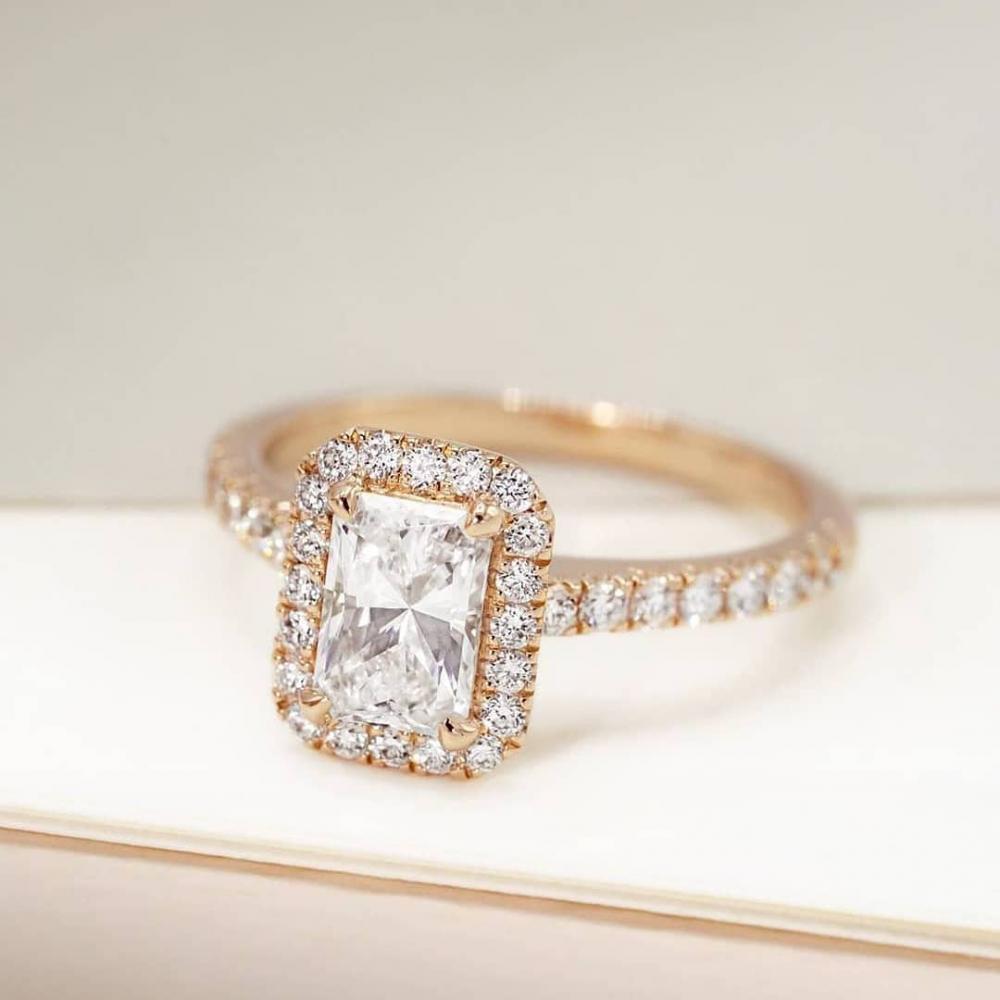
Conclusion
At Punjab Jewellers and Sons, we are committed to providing the highest level of client satisfaction through high quality certified diamonds. We recognise the critical importance of purchasing the proper kind of solitaire and are available to help you choose the ideal jewellery for your requirements from over a wide range of Certified Solitaires.
All our Solitaire Diamonds are 100% Purity Certified, Laser Inscribed with the certificate number which you can track online, pre-scanned by expert gemologists for NO BGM (Brown, Green, and Milky) and No-Fluorescence Diamonds.
Our Diamonds are also sourced Ethically, from conflict-free zones and without exploitative child-labour. Punjab Jewellers & Sons is certified with theKimberley Process Certification Scheme ( KPCS), which is the process established in 2003 to prevent " conflict/blood diamonds " from entering the mainstream rough diamond market by United Nations General Assembly Resolution 55/56.
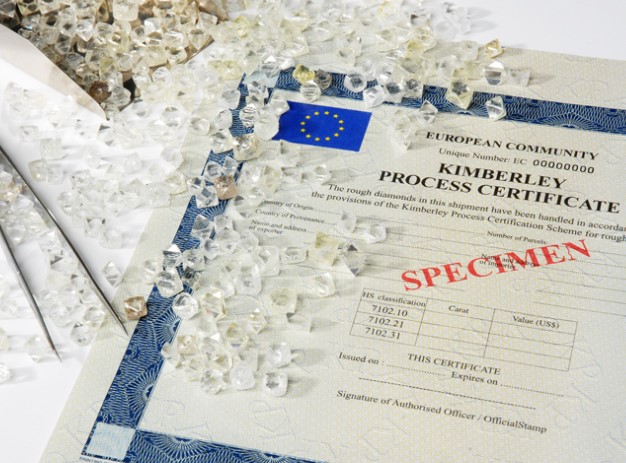
We at Punjab Jewellers and Sons are always there to guide you with the best option to choose from no matter what budget you have, we can suggest the perfect diamond for you.
You can now book your Free Expert session by filling the Contact Us form below and our expert gemologists will be happy to assist you with your dream solitaire diamond.
You are welcome to visit our store - Punjab Jewellers and Sons - At Central Hotel Building, Opposite Underground Parking, Aminabad, Lucknow 226018 and choose from a wide range of certified solitaires and get mesmerised with our exquisite range of sparkling diamonds.
You can browse our diamond jewellery collection on our website as well - https://jewelsbypjs.com/jewellery/diamond-jewellery.html


